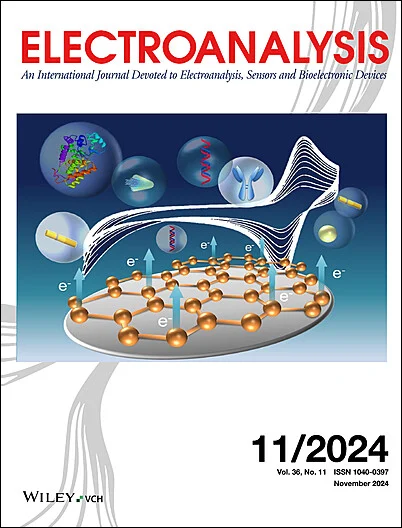锌基电池电极衬底材料的选择
IF 2.3
3区 化学
Q2 CHEMISTRY, ANALYTICAL
引用次数: 0
摘要
本研究评估了锌镍液流电池的锌阳极衬底材料,包括不锈钢带、铜镍锰合金、蒙乃尔合金和镀镍带。蒙奈尔合金和镀镍钢带表现出较高的锌沉积电位,镀镍钢带表现出较低的平衡电位(E0 = - 1.430 V)和最小的反应电阻(0.110 Ω),与锌相似。镀镍带在循环后也保持更高的电池容量,可能是由于平滑的锌沉积和最小的晶粒距离,使其成为首选的阳极衬底。本文章由计算机程序翻译,如有差异,请以英文原文为准。



Material Selection of Electrode Substrates in Zinc-Based Batteries
This study evaluates zinc anode substrate materials for zinc–nickel flow batteries, including stainless steel strip, Cu–Ni–Mn alloy, Monel alloy, and Nickel-plated strip. Monel alloy and Nickel-plated steel strip exhibit higher zinc deposition potential, with the Nickel-plated strip showing a low equilibrium potential (E0 = −1.430 V) and minimal reaction resistance (0.110 Ω), similar to zinc. The Nickel-plated strip also maintains a higher battery capacity after cycling, likely due to the smooth zinc deposition and minimal grain distance, making it the preferred anode substrate.
求助全文
通过发布文献求助,成功后即可免费获取论文全文。
去求助
来源期刊

Electroanalysis
化学-电化学
CiteScore
6.00
自引率
3.30%
发文量
222
审稿时长
2.4 months
期刊介绍:
Electroanalysis is an international, peer-reviewed journal covering all branches of electroanalytical chemistry, including both fundamental and application papers as well as reviews dealing with new electrochemical sensors and biosensors, nanobioelectronics devices, analytical voltammetry, potentiometry, new electrochemical detection schemes based on novel nanomaterials, fuel cells and biofuel cells, and important practical applications.
Serving as a vital communication link between the research labs and the field, Electroanalysis helps you to quickly adapt the latest innovations into practical clinical, environmental, food analysis, industrial and energy-related applications. Electroanalysis provides the most comprehensive coverage of the field and is the number one source for information on electroanalytical chemistry, electrochemical sensors and biosensors and fuel/biofuel cells.
 求助内容:
求助内容: 应助结果提醒方式:
应助结果提醒方式:


